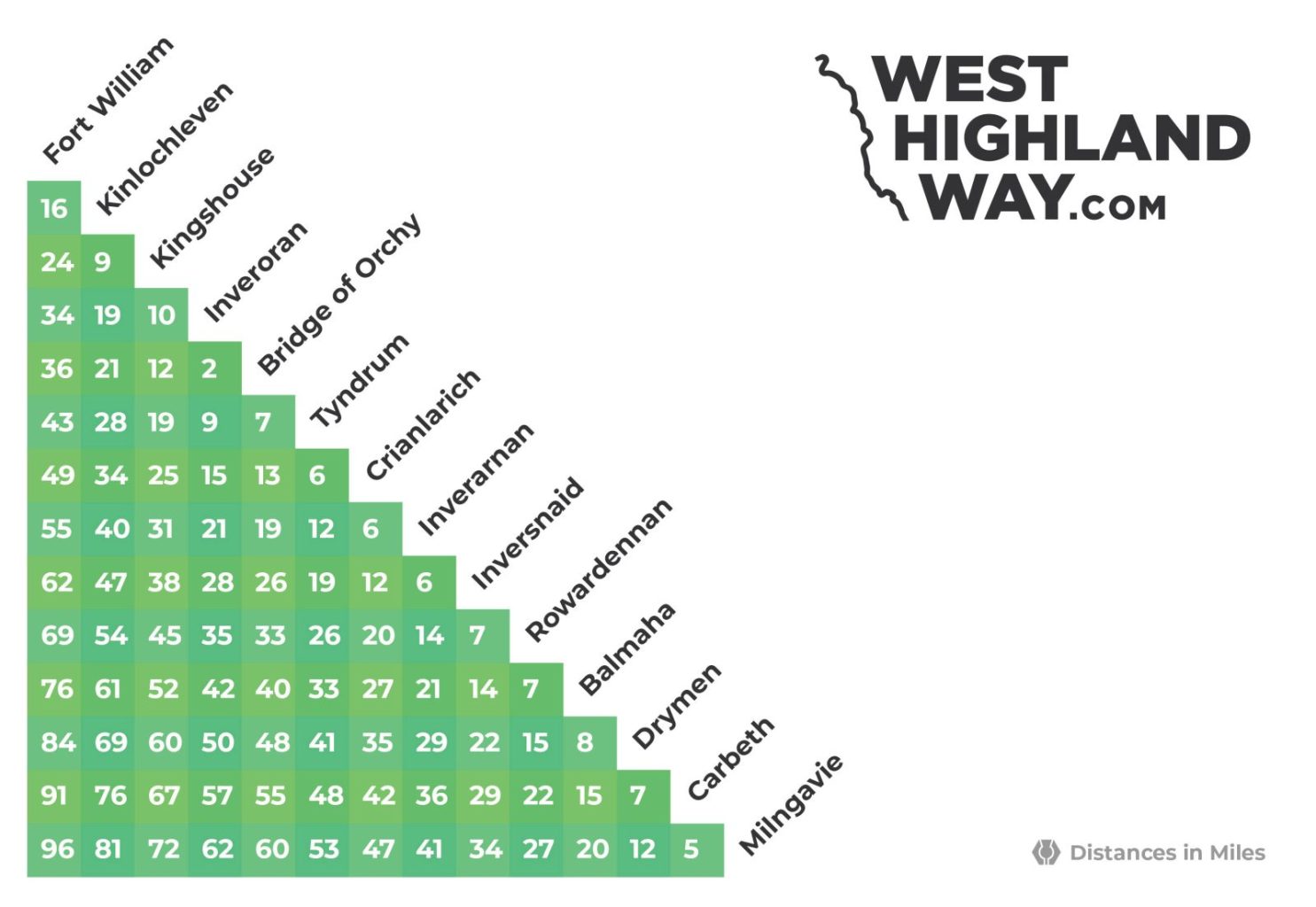The West Highland Way is a 96-mile journey through the beautiful Scottish countryside. It typically takes anywhere from 5 to 8 days to complete, depending on your walking pace and experience. But don’t worry, there’s no rush – take your time and immerse yourself in the stunning landscapes and vibrant culture along the ‘way.
Make sure to plan based on your fitness level and how much walking you’re comfortable with each day. There are plenty of villages and towns along the route, so you can choose to do it all in a few long days or spread it out over many shorter days.
| Most Popular (7 Days) | Advanced Walk (5 Days) | Cycle Route (3 Days) | |
|---|---|---|---|
| Day 1 | Milngavie to Drymen - 12 Miles | Milngavie to Balmaha - 20 Miles | Milngavie to Rowardennan - 27 Miles |
| Day 2 | Drymen to Rowardennan - 14 Miles | Balmaha to Inverarnan - 21 Miles | Rowardennan to Bridge of Orchy - 33 Miles |
| Day 3 | Rowardennan to Inverarnan - 14 Miles | Inverarnan to Bridge of Orchy - 19 Miles | Bridge of Orchy to Fort William - 36 Miles |
| Day 4 | Inverarnan to Tyndrum - 12 Miles | Bridge of Orchy to Kinlochleven - 21 Miles | |
| Day 5 | Tyndrum to Kingshouse - 19 miles | Kinlochleven to Fort William - 16 Miles | |
| Day 6 | Kingshouse to Kinlochleven - 9 Miles | ||
| Day 7 | Kinlochleven to Fort William - 16 Miles |
Distance Chart
Check out this handy distance chart that allows you to find out the distance between any two major stops on the West Highland Way.
If the above pre-made itineraries don’t fit your requirements then you can use this chart to help plan your own journey. Simply follow the column or row from two destinations and the cross-sectional number gives you the distance between the two!
The chart is in Miles as we traditionally measure distances in the UK in imperial measurements. If you want the distance in Kilometers (metric) then you can multiply by 1.6 and convert it to km.

Things to Consider
The West Highland Way is suitable for experienced walkers, although not a very technical trail, it’s physically demanding. You won’t need specialist walking equipment, but we recommend a few essential items such as plenty of water, energy-filled snacks and appropriate walking footwear.
Training Tips
Do you really need to train to do something you do every day? Yes. Believe it or not, going for a stroll for a few hours is very different from walking in the vast open wild for multiple days straight. When you’re preparing to embark on the West Highland Way, it’s essential to be prepared. Here are some training tips for walking the West Highland Way.
Weather
The Scottish weather is famed for being quick-changing and somewhat unpredictable, so carrying an extra layer and waterproof clothing is advisable, just in case you find yourself caught out in a shower. However, it’s equally important to carry sun protection cream for the same reason. You’ll need to consider a few things to stay warm and dry.
Mobile Phone Reception
For large sections of the West Highland Way, there isn’t any mobile phone reception, so it’s a good idea to carry a map of the West Highland Way, a whistle to alert attention and a first aid pack in case of an emergency also. For a more in depth information, please read the benefits and limitations of a mobile phone while walking ion the hills.
Clothing & Footwear
Scotland is famous for its wonderfully diverse climate where one minute it’ll be clear glorious weather, and 30 minutes later, it’ll be blowing a “hooley” – Scottish informal stormy weather. At times, it can feel like all four seasons have swept through the landscapes, often making clothing and footwear decisions rather troublesome. Read a more in-depth guide on what to wear.
The Scottish Midge
While you may never be able to protect yourself from midges and beasties completely, there are a few things you can do to help reduce their irritating presence and appetites! Read a comprehensive guide on how to keep the Midge from spoiling your adventure.
Blisters
Blisters are one of the most common ailments of walking and, if severe enough, can stop you in your tracks. To ensure your journey along the West Highland Way is as comfortable as possible, read this handy guide to help prevent and alleviate the discomfort of blisters.
